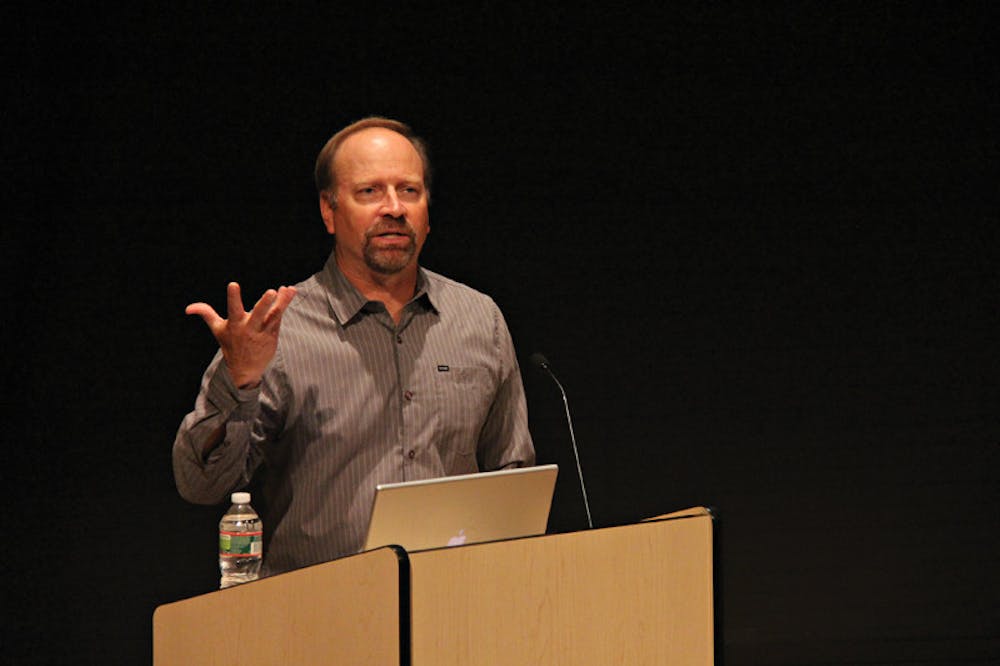Scientist-turned-filmmaker Randy Olson explored the disconnect between the scientific academic community and the public, hosting panels and a discussion on science communication and screening his three films, “Flock of Dodos,” “Sizzle: A Global Warming Comedy” and “Colonel Stubborn: The Last Bastard of Bataan Fights On” this week.
Olson’s visit is part of the Science Center’s year-long series on science communication, which has included lectures from Cornelia Dean and Dan Kahan. His visit was co-hosted by Brown’s Environmental Change Initiative, Center for Environmental Studies, the John Nicholas Brown Center for Public Humanities and the Departments of Ecology and Evolutionary Biology, Geological Sciences, History and Molecular and Cellular Biology.
The screening of “Flock of the Dodos,” a film dealing with the debate between intelligent design and evolution, coincided with Darwin’s birthday on Feb. 12. The film depicted the failure of the scientific community to defend Darwinian evolution. After the film, a panel including Professor of Biology Ken Miller, Assistant Professor of Ecology and Evolutionary Biology Erika Edwards, Assistant Professor of Biology Dov Sax and author Joseph Levine, discussed the implications of the film for the relationship between scientists and the public.
“After seeing the movie, I now feel moved to be a better communicator (of science),” Edwards said. “We have to show that science is not a cold thing.”
Members of the panel agreed that in order to communicate science to the public, non-scientists who can express subjective opinions need to work as aggressive publicists and campaign managers for the scientific community. Olson said scientists need a single word to synthesize their stories. For example, when discussing evolution, the word to fall back on is “truth,” he said.
Edwards identified another gap in communication between scientists and the public.
“The public seems to have a picture of scientists as a group reciting antiquated facts, rather than as a group dynamically questioning,” Edwards said.
Levine said the answer to changing the public’s perception of science is to teach the method of scientific discovery in schools.
“In many states, they are forbidden to teach that way, because it takes time away from the list of facts they have to get through teaching for standardized tests,” he said.
In general, Olson said he disapproves of the term “science communication,” preferring terms such as, “critical storytelling,” a phrase he coined himself. In a lecture on Wednesday at the Science Center, he explained the importance of narrative structure in Hollywood films and research statements alike.
Olson spoke about the need to target visceral, instead of merely cerebral, reactions when telling a story and pointed to groups such as the Intergovernmental Panel on Climate Change as having failed to tell a visceral story.
“The take-home message, I think, is when you’re talking to regular people, you have to be a little less in your head and a little more in your heart,” said Marty Downs, associate director of the Environmental Change Initiative. “He sort of feels like the climate movement has not done that particularly well.”
This spring, the Science Center will invite two more science communicators to speak, including Tom Wessels, professor of ecology at Antioch New England Graduate School and John Long, professor and chair of biology at Vassar college.

ADVERTISEMENT




